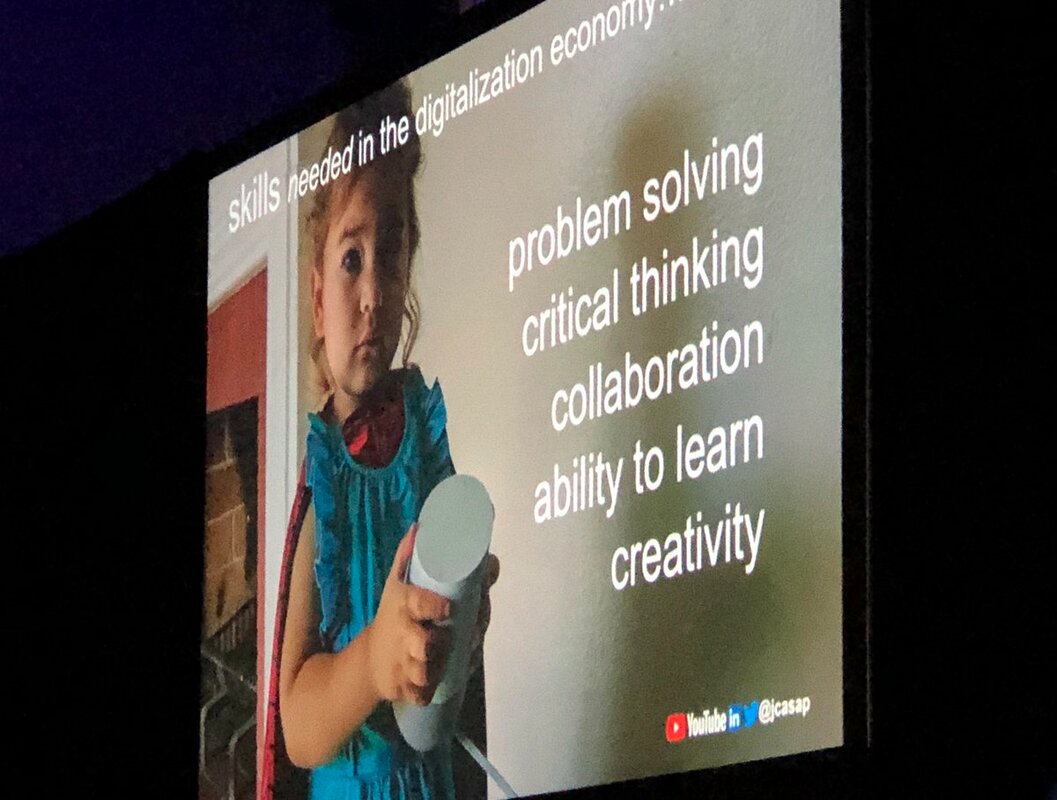|
Another occasional re-post. In spite of our location in proximity to fast growing communities and increasingly expensive housing the regional percentage of students considered economically disadvantaged remains constant at approximately 60%. Our Teaching and Learning group offers a Poverty Simulation to help develop empathy and understanding of the conditions many of our students and their families experience. The excerpt below that I originally posted in 2006 is one compelling example.
From 2006... For the past several months I have been participating in the Urban Engagment Book Club. This month's book is A Betrayal of Work by Beth Shulman. Below is an excerpt.... ______________ For generations, Americans shared a tacit understanding that if you worked hard, you could earn a livable income and provide basic security for yourself and your family. That promise has been broken. More than 30 million Americans--one in four workers--are stuck in low-wage jobs that do not provide the basics for a decent life..... Cynthia Porter works full time as a certified nursing assistant at a nursing home in Marion, Alabama. When she comes on duty at 11 pm, she makes rounds, checking the residents for skin tears and helping them go to the toilet or use a bedpan. She has to make sure she turns the bedridden every two hours, or they will get bedsores. And if bedsores are left unattended, she tells me, they can get so bad you can put your fist in them. But there aren't enough people on her shift. Often only two nursing assistants are on duty to take care of forty-five residents. And Cynthia must also wash the wheelchairs, clean up the dining rooms, mop the floors and scrub out the refrigerator, drawers and closets during her shift. Before she leaves, she helps the residents get dressed for breakfast. For all this, Cynthia makes $350 every two weeks. She is separated from her husband, who gives her no child support. The first two weeks each month she pays her $150 rent. The next two weeks, she pays her water and her electric bills. It is difficult to afford Clorox or shampoo. Insuring that her children are fed properly is a stretch. She is still paying off the bicycles she bought for them last Christmas. She can't afford a car, so she pays someone to drive her the twenty-five miles to work. There have been a few days when she couldn't find a ride. "I walked at 12 o'clock at night," she said. "I'd rather walk and be a little late than call in. I'd rather make the effort. I couldn't just sit here. I don't want to miss a day--otherwise, I might be fired." No public transportation is available that could take her all the way to work. Cynthia lives with her three children in a small maroon-colored shack. It is miles from a main road. Inside, the plywood floor is so thin and worn that the ground can be seen below. In the next room, a toilet sinks into the floor. There is no phone. A broken heater sits against the wall; the landlord refuses to fix it. Keeping her children's clothes clean requires great effort because Cynthia has no washing machine. Instead, she fills her bathtub halfway and gets on her hands and knees to scrub the clothes. Then she hangs them out to dry. Despite the frustration and the difficult conditions, Cynthia beams when she talks about her job. "I like helping people," she says. "I like talking with them, and shampooing their hair. I like old people. If they are down, I can really make them feel better. The patients say, 'Nobody loves me or comes to see me.' Sometimes I help the residents play dominoes. Sometimes their hands shake, but I hold them. It's a lot of fun for them. I tell them 'I love you,' and give them a hug. I like being a CNA. I'm doing what I want to be doing." Shameless plug - registration and the call for presenters is now open for our 25th Annual Technology Conference. As I think back to that first conference 25 years ago, I can still remember having each participant grasp long strings of yarn to introduce the radically innovative concept of being connected to a network. There was this brand new thing called the World Wide Web and something called Mosaic would soon make its debut as the first graphical browser.
Just as it was difficult then to imagine the changes that the world would see over the next 25 years, it is not possible to know what the next 25 years will bring. I do feel fairly safe in predicting that the amount of information and the rate of digitalization will only increase. As @jcasap pointed out this past week at the TASA Midwinter Conference, that brand new iPhone X is the oldest technology my grandchildren will ever know. Another important point Jaime made was that the education system is not broken - it worked for the thousands of administrators in the room, and it was his own personal vehicle out of poverty. What has changed, and continues to change is the digitalization of the context in which education takes place. Organizations like ISTE and movements such as Future Ready Schools and Education Reimagined provide powerful frameworks for the systemic changes needed to adapt to the changing context. It's also important to remember that the future is not some nebulous time that will eventually come - it is here. right. now. @lgracey does a presentation called The Future is Now - she will be presenting it this week at #TCEA19 - where she emphasizes that many of the technological and societal changes we think of as futuristic are already here - we can't afford to wait to begin preparing learners. Within each of our circles of influence - classroom, campus, PLN, whatever spheres we work in - we must do what we can to develop the capacities of the learners we influence to adapt to a future that is already here. |



 RSS Feed
RSS Feed